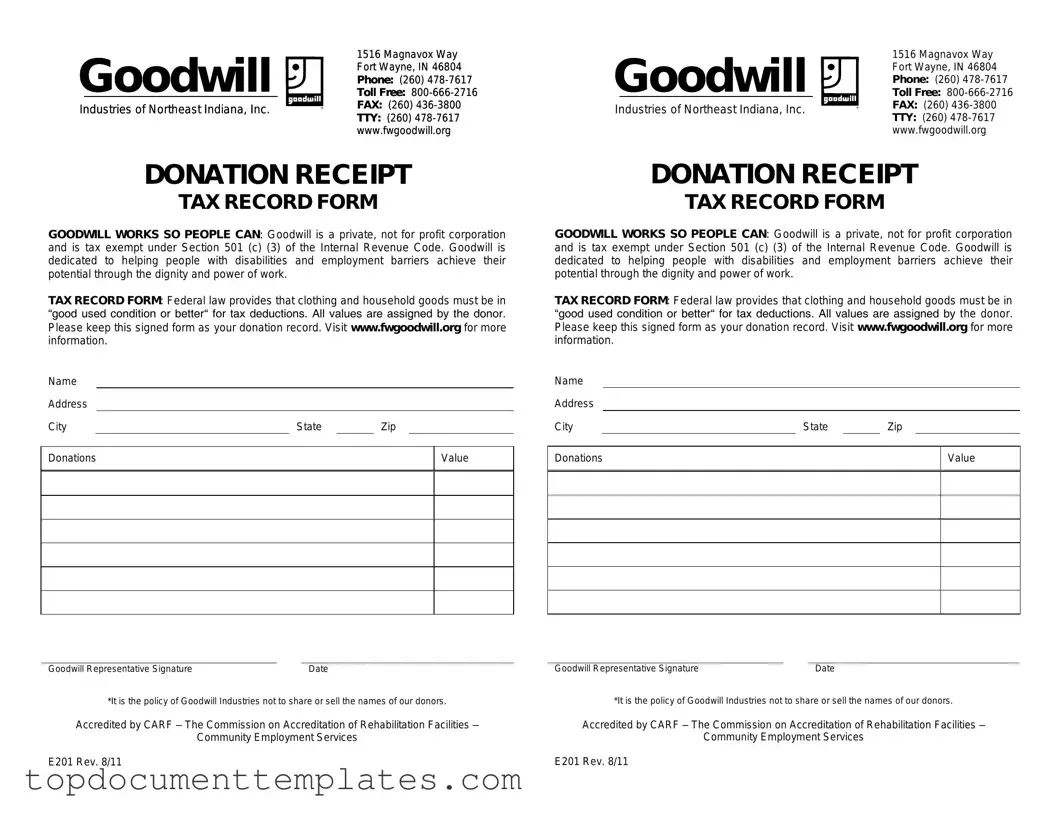When you donate items to Goodwill, you not only support a worthy cause but also have the opportunity to claim a tax deduction. Central to this process is the Goodwill donation receipt form, which serves as proof of your charitable contribution. This form typically includes essential details such as the date of the donation, a description of the items donated, and their estimated value. It's important to note that while the receipt acknowledges your generosity, it does not assign a specific dollar amount to your items; instead, it provides a space for you to assess their worth. Additionally, the form often includes information about Goodwill’s mission, reinforcing the impact of your donation on the community. Keeping this receipt is crucial for tax purposes, as it can help you substantiate your claims during tax season. Understanding the components of this form can streamline your donation experience and ensure that you receive the maximum benefit from your generosity.
